Dev log

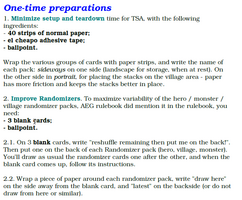
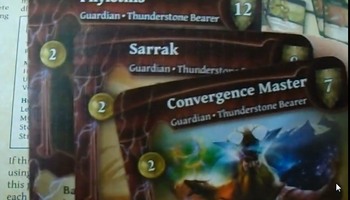
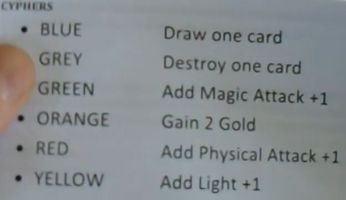

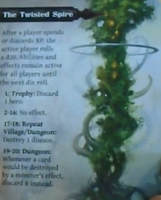
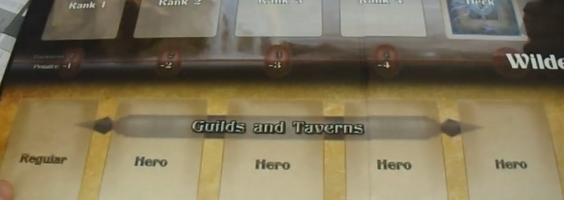
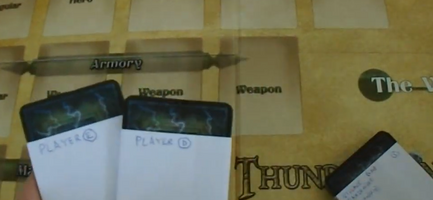

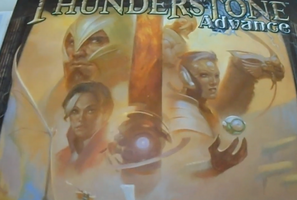

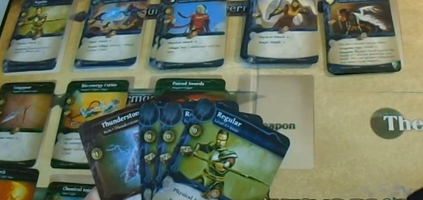
Dev notes
2023-4-30
Version 1.5.2
- Not really an update so I kept the version.
- TSA system is designed to be prepared for the final battle vs. the boss: when he appears, you
- Recently must have shuffled your deck, and
- Within 2 turns (Dungeon board 1 turn) you must prepare your hand: remove slain monsters, or weaker cards, to the end of the deck, and
- Repeat until you have your strongest cards in your hand then defeat the boss.
- That is a bit of a luck fest and hard to pull off, because you have no real control over when your deck is shuffled. Also, to Prepare means the monsters before the boss will exit the dungeon to add negative VP towards your score.
- To at least mitigate that timing issue, I recommend playing with the Cancel rule introduced in this Roguelite version - this tweaks your decks and adds richness to the strategy and you still need to prepare as described before, but now it's more manageable.
- Numenera is an excellent deck builder, but it's your call if it would win attention from your other deck builders. If you don't care about or are done with deck builders, this is easy.
- Numenera has a certain "vibe" or personality that other game products lack, and as others mentioned, it "feels complete". Compared to other Deckbuilders I know of - Heroes of Tenefyr, The Veil, Ausonia, Agent Decker, Direwild it's really hard to decide. Numenera setup/teardown in total takes more time, but it plays fast enough.
- Personally I want more combo's, and more synergy, so I lean more toward Hardback and The Veil. But I also can't really bear to part with Numenera either. I love the Roguelite Numenera.
Final thoughts
2023-4-26
Version 1.5.2
- Found an issue with keeping destroyed monsters in envelope:
- since the randomizer for that type will be removed, when an escapee of that type pops up, there would be no place to store it, except put it after play too in the envelope. I found that a bit inelegant.
- Annoying monsters hard to defeat will increase in frequency if other monsters are destroyed, I think that would decrease the “fun”.
- Therefore, Canceled or destroyed monsters are kept on a separate space during play.
- I like the cancel and donate rules although they are as the rest, situational.
Final thoughts: the Roguelite mode solves nearly all arguments against TSA except for the fact that I still haven’t found good combo’s, so I’ll likely sell the game eventually, since there are games with more advanced synergies such as The Veil and Hardback.
2023-4-24
Version 1.5.1
- Played the scenario A from the rulebook alongside with the campaign version developed earlier. I did not enjoy:
- Clutter of iron wind cards. Destroying them will deplete the deck and after it is depleted you are essentially immune to disease. Feels better than an endless stack of disease hitting you.
- Clutter of dead monster cards. Defeating a monster gives a 1-time xp token reward but then continues to hurt your draw. I had too many dead draws and destroying a defeated monster just felt wrong.
- The last 5 cards were unbeatable with such a diluted hand. Only the 4th attempt produced a hand you can beat a L3 enemy with.
- Lack of a money sink. The logic always is if I can’t beat any enemy I go shopping and spend all my 10+ coin there to buy the most expensive 7 coin card.
- Leveling up via XP is too limited.
- Scenario 1 felt more like a “puzzle”. If the unstated idea is to study any given setup in detail, that should be mentioned.
- Campaign should be split into two separate parts:
- Adventure Mode: each session your village, hero set and dungeon are set up via Randomizers from the Randomizer packs.
- Eternal Mode: you set up village, hero set and dungeon are set up via Randomizers from a separate envelope labeled “The Village”.
- Monster clutter:
- I’ll add a Free action to cancel out 1 monster card from your hand against 1 escapee card provided they show the same VP (the last escapee must be face up). Both go back into the box and simplify the final VP count. It’s beneficial to do because
- “Monsters are never destroyed option”- (as a result from a Rest action for example), they always go back into the box to be used in future sessions, not into the envelope. Pro: always good arc. Con: tiers always the same.
- “Monsters destroyed go into the “Destroyed” envelope”: pro: you only keep what monsters you couldn’t defeat in future sessions. Con: when monster tiers are depleted, you need to destroy the corresponding Randomizer as well. You may well end up with no tier 1 enemies at all…
- Tiered monster deck. Never thought I’d say this, but the 1-1.5-2-2.5-3 setup is too tiered, because it means late game only has L3 monsters that all are a pain to combat AND your deck is full of crappy L1-2 monsters. It’s better to change tiers into (1-2)(2-3), meaning you divide out the L2 cards over L1 and L3 then shuffle both remaining decks.
§ when the infected deck shows a monster you must defeat him again.
§ You cull your deck for more usable draws later.
§ But when you do, you must carry out any Trophy effect from both cards.
2023-4-23
Version 1.5
- Rewrote the introduction, added key points.
- Introduced difficulty settings table. I discovered that wilderness is easier than dungeon board side, so no we have Wx setting and Dx setting where x =1 regatdless of escapee level, and x for escapee level.
- Discovered Eternal mode. Essentially your role is kind of “guardian force” protecting a village over the aeons. When stacks deplete, use any still available randomizer to fill up the emptied stack.
- When hero stacks die, get a new hero until all heroes are gone.
- When village things die, get a new village thing.
- Worried that saving the village will be too much work. The packs go (along with escapees) into the box, so the randomizers probably best represent the particular village end game state.
2023-4-21
Version 1.4
- Added more details on what to write on each pack.
- Improved instructions on setup, and teardown.
Version 1.1.3
Added:
- Synopsis. Add more meat to the theme in this resettable, rogue-lite campaign version of Thunderstone Advance: Numenéra solo. Now, your actions change the future forever and stakes are higher than ever!
- Victory conditions.
- You win the campaign after you defeated the last boss; complete the campaign by ticking off your victories over all available bosses (3 in Numenéra, more for ToR and other TSA editions).
- You lose the game when the boss is not defeated or your net vp <0.
- You lose the campaign when the entire village is destroyed.
- Game mode - This is for solo, "standard difficulty" mode (i.e. empty halls at start, respite after defeating a monster. The campaign is fail-forward, keep envelope and leftover xp as-is.
- Resettable: previously destroyed cards are kept in an envelope.
- Roguelite: leftover XP carries over to the next session.
- Monsters can pop up in your village decks.
- Wrote out Dungeon phase:
Dungeon phase
Whenever an enemy card is pushed out of the hall, it enters the village:
1. First escapee goes onto the top-left stack on the bottom; placed sideways (landscape), face up (for later).
2. Next escapee goes to the first village stack that doesn't have an escapee
yet (going left to right then top to bottom on the board).
3. When an escapee enters the village while all village stacks have an
escapee, first rotate each landscape escapee in the village portrait side,
then place the escapee under the top left stack as before.
4. Destroy the topmost card of the stack the escapee landed on (into the
envelope), regardless whether that was a level 0 card or not.
5. Any empty slots are skipped when considering escapee placement.
6. Repeat for each enemy card pushed out this way.
- Did some calculations on variability, from an online commenting with Ricky Royal. To start off, you have, considering only the base game TSAN, and following the rulebook setup for the game with randomizers:
- 10 heroes in 4 slots, where the order of the placed heroes does not matter. The high school formula for k over n, (n k) = n!/k!/(n-k)! applies, so you have already 10 x 9 x 8 x 7 / (4 x 3 x 2 x 1) = (10/2) x (9/3) x (8/4) x 7 = 5 x 2 x 3 x 7 = 2100.
- Monster deck variability is (variants on L1) x (variants on L2) x (variants on L3 x something complicated from removal of 5 and shuffling in a boss) x 3 (for the 3 bosses). That’s at least 1000.
- To calculate the 8 village slots with the restrictions are straightforward linear optimization, but since that’s university level math, I chose Excel to make it understandable for mortals. Now, formally the question is: given 7x weapon, 5x item, 4x spell, 5x villager, draw exactly 8 considering only at most 3 weapon, at most 2 item, at most 3 spell, and at most 3 villager. After some fiddling I got this:
- Explanation:
- Column F is just a paranoia check, that indeed the restrictions are satisfied.
- Each row conditions on weapon then on item – in hindsight maybe conditioning on item first would have been clearer.
- The first row for example considers no weapon, so you must have 2 items, 3 spells and 3 villagers to make up for 8, which reduces it to the high school formula.
- In case you were wondering why these rows are not symmetrical (Pascal's triangle comes to mind), that’s because of the restrictions.
- Summed result: 83000 fundamentally different village setups.
- The grand total of variations is therefore 83k x 2100 x 1000 = 174 Million.
OK great.
However, on bgg there are some complaints about lack of synergy. Maybe you do need the TSA alongside with TSAN.
2023-4-17
Version 1.1.2
- Watched TSA Towers of Ruin to see if it would enrich TSAN. It doesn’t seem to, because TOR is high fantasy.
- However, the card set of TSA seems much richer: player cards allow spending XP for various benefits, cards interact with certain races (human, dwarf). Some starter heroes must be bought with coin, providing a money sink, the artwork is generally more vibrant and attractive. More cards allow culling of cards in hand.
- First sketches on what info should be on the envelope: tickboxes that you tick off to unlock the next difficulty.
- Wrote out 1.setup – 2.gameplay – 2.1.village phase – 2.2.dungeon phase – 3.tear down.
- Coined the term escapee for card entering the village and finding a stack to attach to after destroying the top card.
- Wrote out Victory conditions.
- In remarks added - it's roguelite since you retain the xp tokens. When you're facing the boss and know you will lose, you can sacrifice weak cards so post game your next game's starting hand will be stronger.
- - monsters in the village stay "locked" out as long as in next game the randomizer of the pack they're in doesn't come up. This can mean the remaining monsters of that pack are less now. Due to optimized monster randomizer, this particular set won't occur next game. And when it does, this will lead to a faster ramp-up of the monster level, but hopefully the player will either have become stronger or more skilled.
- - strong incentive to not fail a fight vs a combined enemy: there is more at stake.
- - equally strong incentive to not let them leave the hall. This will discourage the player from hanging around the village and taking his sweet time levelling up strong.
- - assuming a win rate of about 30-50%, this is a dozen sessions, where entire hero classes may disappear.
- - resetting the campaign is straightforward, just like when first organizing the box.
Version 1.1.1
- No changes with 1.1 but a minor versioning makes sense now.
- Some online research. Bgg reviews are alarming:
(-) “lacks interesting combos”
(-) “boring and repetitive”
(-) “setup long”
(-) “outclassed by other games”
(-) “Edit: got a copy of Aeons End. This game must feel very old now.”
- Most players that sold it rate it a 5 (obviously rated it high then after the sale kept the hype text but set the rating it to what they really thought of it). and for them the campaign version comes too late.
- All these points will be addressed:
- Setup is optimized via wrappers, but will still take you 5 minutes.
- Boring and repetitive is optimized by a hero starting deck that you can compose from the previous session’s end state. This won’t be repetitive at all.
- Boring is optimized by the enemies infecting your village decks.
- Still, I do agree about the absence of interesting combo’s – TOR seems far more interesting. I consider using Gold spending for some extra functions.
Version 1.1
Added instructions for using paper wrappers. Having to take out the loose pack of cards near the card divider is just unpleasant.
Since card wrappers expect a certain amount of cards to wrap, it’s necessary to add instructions on what to write on them and where.
Introduced the XP point count during Tear down. Game should encourage the not spending of XP tokens for the end phase and give an interesting choice. Not counting xp in VP wouldn’t do in a campaign setting, and TSAN uses xp tokens as tiebreakers so at least it recognizes that as a resource.
- After removing village randomizers due to emptied slots, you may still have card copies of that slot in your hand, draw or discard pile. After the game, you can choose to carry any such heroes over to a future session. It’s just that the particular card supply has gone extinct, and you let that happen by not taking care of monsters, you are responsible.
- Notes on monster flow:
- Monsters decks in setup will dwindle over plays, because monsters cards will stay "locked" in the box as well as destroyed (in the envelope).
- This will lead to a faster ramp-up of the monster level, but the player would have stronger cards and now has more valued monsters to defeat as trophies.
- The boss and the monster types are assumed known (you just set it up!).
- Trophies destroyed from hand (Rest) are destroyed (in the envelope).
- Player deck effects:
- In later sessions a hero can be set up whose stack has only level 2 heroes for example.
- When you're facing the boss and know you will lose, you can sacrifice weak cards so post game your next game's starting hand will be stronger.
- strong incentive to not fail a fight vs a combined enemy: there is more at stake.
- equally strong incentive to not let them leave the hall. This will discourage the player from hanging around the village and taking his sweet time levelling up strong.
- Usability notes
- Assuming a win rate of about 30-50%, this is a dozen sessions, where entire hero classes may disappear.
- Resetting the campaign is straightforward, just like when first organizing the box.
Version 1.0
Finally got a copy of TSA:Numénera in March 2023 from www.marktplaats.nl, I had a notification alert set years ago.
TSA is quite old, anno 2023 it’s 10 years old, and since then deck building and boss battlers have evolved to their own genres. I was pleasantly surprised that TSA features culling (Rest action) and setting up for the next draw (Prepare action).
However, the industry has come a long way since, for example
- Hero Realms synergies. HR invented “family" cards that gave synergy bonuses when cards came into play of the same family, which was implemented later in Hardback and around the same time in The Veil.
- Emergent story arc: Aeon’s End introduced (or at least popularized) the sense of a growing arc of danger by putting level 1 boss cards on top and level 3 boss cards near the end.
- Agency has become a big thing; especially since the rise of popularity of the solo genre, and people don’t accept blind luck that easily anymore. Dials must be present that players can tune.
- Builds have become a thing of their own, mostly originating from Diablo-esque video games, but the viable builds concept is just as tangible in card games like Arkham Horror LCG. Translated to TSA your card acquisition and culling strategy should allow to optimize against the set of enemies and boss.
- Administration avoidance. Because of the planetary lack of attention spans, fiddliness should be addressed by the dev and require at most minimal administration. There is a TSA variant where monsters after leaving the dungeon hall damage the village (roll a d12 to select, and put gray xp markers to damage the targeted stack), and this fails not least because it is hard to pick up later. Minions must die or otherwise are resurrected at full health – The Veil does this. Keeping track of which round you are in, should also be avoided (That’s why I rewrote the persona AI for the veil – now it does not need a round tracker), the game state should make that clear.
- Timers and Cooldown. Introduced by Aeon’s End, placing dice with a value representing “amount of rounds until triggered" or moving a wooden token. In The Phantom, Terror on Mawitaan, a “clock” ticks where each round you remove a “time” token. When the last is removed, time’s up, boom. The closest TSAN analogy is the Prepare action. Reordering the top x cards of a draw pile, or placing a card on the bottom of a draw pile, fall into the same category.
- Sinks are expected – having a certain surplus of unspendable or inconvertible resources has been criticized in the video game industry. In Diablo 2, gambling was introduced for providing a money sink. Recipes were introduced to provide a gem sync. Sinks are expected to be addressed in board game land as well: in TSAN, late game gives your hand a lot of money that you have no way of to spend, and it feels bad to let these go to waste. The rulebook admits as much when it writes “thematically, these coins are spent as tips in the tavern to gain the intelligence.” – it would be nice to see the spillover in the local economy of a TSA village, although I don’t see how to do that elegantly.
- Finally, theme and world has gained popularity, games are supposed to meld theme with mechanics and offer a game state that is believable, or at least entices a suspension of disbelief.
- Personally, for me it’s relevant that I can reason over a board game state – make plans, and consider effects.
Before finishing my first TSAN session, it was already clear the game needs a modernization overhaul to address the above aspects.
After having made campaign versions of The Forgotten Road and The Last Stronghold the idea of playing one-off forgettable sessions of TSA without any persistence nor inter-cohesion didn’t appeal.
To add cohesion, your previous results would carry over to the next (future) session. So naturally the first step would be:
- Your starting deck (6 Regulars, 2 of each torch, longspear, TS shard) would not grow out of their wrapper but stay max 12.
- Leftover XP markers (lovely colorful things) would also carry over, so thematically “you" would represent like a band of adventurers with accumulated knowledge.
- Monsters free from the Dungeon should impact the village in a tangible way and without administration.
Working out these points led to the first draft.
This campaign mode merely provides cohesion and thematic meaning to entice you to play again.
Files
Get Thunderstone Advance: Numenera Roguelite
Thunderstone Advance: Numenera Roguelite
Roguelite adaptation to the classic Thunderstone Advance!
| Status | Released |
| Category | Other |
| Author | Kosterix |
| Tags | Atmospheric, charming, deckbuilder, numenera, Roguelike, Roguelite, thunderstone, thunderstone-advance, Tower Defense, tsa |
Leave a comment
Log in with itch.io to leave a comment.